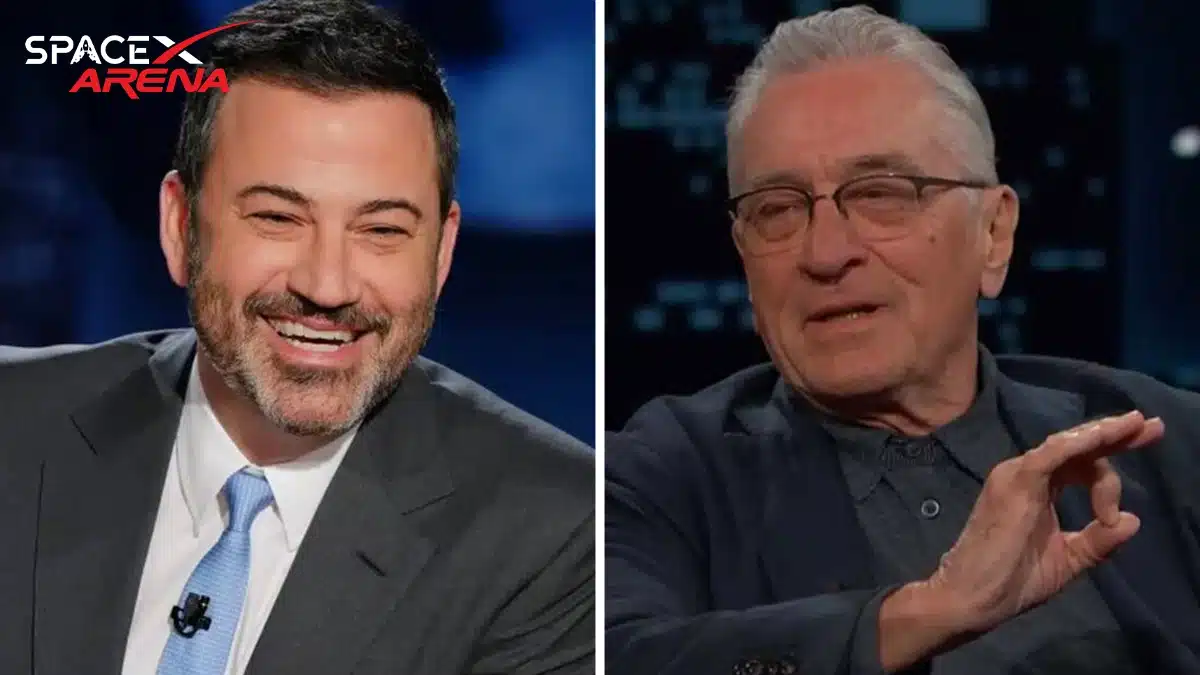Jimmy Kimmel Live Receives Lowest TV Rating in History Following Episode With Robert De Niro.
In an unexpected turn of events that has caused a stir in the entertainment world, “Jimmy Kimmel Live!” has seen a notable drop in its audience numbers. The recent episode with Robert De Niro, known for his quick wit and straightforward style, reportedly received the lowest ratings ever for a late-night talk show. This has led to a flurry of analysis, conjecture, and discussion about the reasons behind this unparalleled drop and what it means for the future of late-night TV.
The episode presented De Niro at his finest, sharing frank insights, entertaining stories, and candid views on a range of subjects, including politics. Despite the buzz around such a high-profile guest, the episode’s ratings took a dive, raising questions about the disconnect between De Niro’s celebrity status and the actual viewer turnout.
Several factors have been proposed to account for the ratings downturn. Some believe that the content of the episode, especially De Niro’s political remarks, may have turned off some viewers. In a time of intense political division, celebrities’ political views can sometimes trigger a backlash, resulting in lower viewership for shows that feature such discussions.
Others link the ratings drop to wider changes in media consumption patterns. With the rise of streaming platforms and on-demand content, traditional TV ratings have been on a steady decline. As such, the low ratings for “Jimmy Kimmel Live!” might not only reflect the specifics of the De Niro episode but also a broader shift in how and when audiences tune into late-night talk shows.
The record-low ratings for “Jimmy Kimmel Live!” have ignited a conversation about the future of late-night TV. Show hosts and producers are now tasked with striking a balance between entertaining content and potentially polarizing political discourse. This incident has led to calls for a reevaluation of the role of late-night talk shows in a changing media environment, suggesting that these programs may need to adapt to stay relevant and retain viewers.
The ratings drop also raises questions about the choice of guests and discussion topics on late-night talk shows. As platforms that traditionally mix entertainment with topical commentary, finding the right balance to attract a wide audience without watering down the show’s core essence is an increasing challenge.
The episode with Robert De Niro could serve as a learning experience for the future of late-night TV, highlighting the importance of understanding audience expectations and the impact of external factors on viewership. As the industry changes, so too must strategies for engaging audiences.
In the wake of this ratings setback, there’s a chance for late-night shows to innovate, experimenting with different formats, topics, and guests to regain audience interest. Whether by including diverse perspectives, using social media for wider engagement, or completely rethinking the late-night format, there are many potential paths for renewal and growth.
The unprecedented ratings drop for “Jimmy Kimmel Live!” underscores the complexities of producing late-night TV in today’s media landscape. While various factors contribute to the decline, it also presents an opportunity for self-reflection and innovation within the genre.
As late-night talk shows grapple with challenges like political polarization and changing viewer habits, their ability to adapt and evolve will be key. The future of late-night TV may be uncertain, but it also holds promise for those willing to explore new ways of engaging and entertaining audiences. Ultimately, the lasting appeal of late-night TV may depend on its ability to mirror, adapt to, and resonate with the changing world it aims to entertain.

